Mathea Ford's Blog, page 13
October 11, 2024
Soft Diet For Kidney Failure-Podcast

Managing kidney health is critical for individuals living with chronic kidney disease (CKD) or kidney failure. One effective way to support overall health is through diet, particularly by following a soft diet tailored for kidney needs. A soft diet includes softer, easily digestible foods, helping manage symptoms while ensuring adequate nutrition. This post explores the benefits, considerations, and practical tips for following a soft diet for kidney failure.
For More Recipes and Ideas --->> Get Your Free Meals and Recipes That Are Perfect for Pre-Dialysis Diets, Pre-Dialysis with Diabetes, or Dialysis Diets.
Understanding the Soft DietA soft diet is specifically designed to ease the digestive process and reduce strain on the kidneys. It typically includes soft, easily digestible foods, which help manage symptoms of kidney disease while ensuring that individuals receive essential nutrients. The primary goal of a soft diet is to provide nourishment without overwhelming the digestive system, making it especially beneficial for those experiencing difficulty swallowing or chewing.
Benefits of a Soft DietImproved Nutritional StatusA soft diet can significantly enhance overall health. By focusing on nutrient-rich foods that are easy to digest, individuals can ensure they receive essential nutrients, including calcium and vitamins. This improvement in nutritional status positively impacts energy levels, immune function, and overall well-being.
Reduced Kidney StrainFollowing a diet tailored for kidney health can help alleviate pressure on the kidneys, potentially slowing disease progression. Soft foods are generally lower in potassium and phosphorus, which are crucial for kidney health. By carefully managing nutrient intake, individuals can better support their kidney function and overall health.
Positive Effects on Blood HealthOne of the critical advantages of a soft diet is its impact on blood pressure and cholesterol levels. A diet low in sodium and unhealthy fats promotes healthier blood vessels and overall cardiovascular health. This dietary approach can help manage common issues associated with kidney failure, improving long-term health outcomes.
Potential DrawbacksRisk of Protein DeficiencyWhile there are many benefits to a soft diet, itâs essential to be aware of potential drawbacks. One significant risk is inadequate protein intake. Individuals with kidney failure need to adjust their protein intake based on their CKD stage; typically, 0.6-0.8g of protein per kg of body weight for pre-dialysis patients. If individuals do not receive enough protein from their food sources, it can lead to muscle loss and fatigue over time.
Nutritional Education NeedsIndividuals on a soft diet may face the risk of malnutrition or weight loss if they do not consume sufficient calories. Therefore, proper nutrition education is crucial for those following special diets. It ensures that individuals are aware of their dietary needs and can manage their health effectively.
The Importance of Professional GuidanceAdhering to a kidney failure-specific soft diet should always be done under the supervision of a doctor or dietitian. Their guidance is vital for avoiding potential risks and ensuring that individuals receive all the necessary nutrients for daily functioning. Consistent monitoring by healthcare professionals helps maintain overall health and well-being, making it essential for anyone considering dietary changes.
Short-Term BenefitsIn addition to long-term advantages, a soft diet offers several short-term benefits that should not be overlooked. These include improved nutrition, appropriate protein intake, and the ability to incorporate dietary supplements into daily meals. A well-planned soft diet provides essential nutrients and can enhance overall health, regardless of the stage of kidney disease.
Practical Tips for Following a Soft Diet Meal Planning StrategiesWhile eating a soft diet may sound straightforward, it requires careful planning to ensure individuals get all the necessary vitamins and minerals. Thoughtful meal planning can help maximize the benefits of a soft diet while meeting dietary restrictions.
Choosing the Right FoodsOpt for soft foods that are easy to digest, such as mashed potatoes, cooked carrots, applesauce, smoothies, and steamed fish. Avoid hard, crunchy, or processed foods that may be difficult to chew or digest. Adjust consistency using liquids like milk or broth for pureed meals.
Incorporating SupplementsIncorporating nutritional supplements into a soft diet can provide additional health benefits. These supplements can help ensure individuals receive adequate nutrition, especially if they struggle to meet their dietary needs through food alone.
A soft diet for individuals with kidney failure offers numerous benefits, including improved nutrition and reduced strain on the kidneys. By focusing on nutrient-rich, easy-to-digest foods and adhering to recommended dietary guidelines, individuals can enhance their quality of life. Always consult with a healthcare professional or dietitian to personalize dietary plans effectively, ensuring that they meet individual needs while promoting overall health.
Learn more about Dietary Strategies for Chronic Kidney Disease Management CKD Diet Overview- Podcast
Learn more about Boosting Flavor Without Salt Using herbs and spices to enhance your meals-Podcast
The post Soft Diet For Kidney Failure-Podcast appeared first on Renal Diet HQ.
October 9, 2024
Hydration Tips for CKD Patients: How much water should you drink daily?-Podcast

Managing chronic kidney disease (CKD) is all about balanceâespecially when it comes to hydration. How much water should you drink if you have CKD? The answer isnât as simple as it may seem. Drinking too much or too little can lead to serious health complications. Today, weâre going to dive into how you can safely manage your hydration when living with CKD and provide practical tips to help you stay on track.
For More Recipes and Ideas --->> Get Your Free Meals and Recipes That Are Perfect for Pre-Dialysis Diets, Pre-Dialysis with Diabetes, or Dialysis Diets.
The Role of the Kidneys in Fluid RegulationNormal Kidney FunctionIn a healthy body, the kidneys work as essential regulators of fluid balance. They help remove excess water and waste from your bloodstream, keeping things in check. However, when you have CKD, your kidneysâ ability to perform these tasks is significantly reduced. This makes managing your fluid intake crucial to avoid dangerous conditions like fluid overload (too much fluid) or dehydration (too little fluid).
CKD and Fluid ImbalanceWith CKD, the stakes are higher. Since the kidneys can no longer filter water and waste efficiently, you need to be more mindful of how much fluid youâre taking in. Your hydration needs may change as your kidney disease progresses, so it's essential to be aware of how your body is handling fluids and adjust accordingly.
How Much Water Should You Drink with CKD?Personalized Hydration PlanWhen it comes to how much water you should drink with CKD, the answer varies. Your fluid needs depend on many factors, including your CKD stage, other health conditions, medications, and activity level. Thatâs why itâs crucial to follow a hydration plan tailored by your doctor or dietitian. They can consider all these variables to recommend the right daily fluid intake for you.
Doctorâs RecommendationEvery patientâs situation is different, so donât rely on generic advice. Instead, consult with your healthcare provider to get a hydration plan thatâs right for you. Whether itâs limiting fluids to avoid overhydration or increasing them slightly to prevent dehydration, your doctor will offer the best guidance.
Signs of Dehydration and OverhydrationSymptoms of DehydrationItâs important to recognize the signs of dehydration so you can act quickly. Common symptoms include:
Dry mouthDizzinessDark-colored urineThese signs can indicate that your body is not getting enough water, which is especially dangerous if you have CKD.
Symptoms of OverhydrationOn the flip side, drinking too much water can also be problematic. Signs of overhydration include:
Swelling in the legsIncreased blood pressureBoth dehydration and overhydration can be harmful when you have CKD, so being aware of these symptoms is essential to maintaining your health.
Practical Tips for Managing Fluid IntakeTrack Your Fluid IntakeOne of the most effective ways to manage your hydration is to measure and track your daily intake. Use a daily log or a mobile app to keep tabs on how much fluid youâre consuming. This can help you stay within your doctorâs recommended limits.
Adjust for Activity and Weather
Your fluid needs may fluctuate based on external factors like weather or how active you are. For instance, if itâs hot outside or youâve been physically active, you might need to slightly increase your fluid intake. However, always do this cautiously and with your doctorâs guidance.
Remember, fluids come from more than just water. Foods like soups, ice, gelatin, and even fruits contribute to your daily fluid intake. Be sure to count these when logging your daily fluid consumption to avoid accidentally going over your limit.
Instead of drinking large amounts of water all at once, itâs better to take small sips throughout the day. This habit helps prevent overloading your kidneys with too much fluid at a time.
A great tip to stay on track is to keep a water bottle nearby as a visual reminder to drink regularly. This makes it easier to sip fluids throughout the day without overdoing it.
Itâs also important to choose beverages that are kidney-friendly. This means avoiding drinks that are high in potassium and phosphorus, unless your dietitian says otherwise. Water is always a safe bet, but you can also opt for herbal teas and other low-phosphorus, low-potassium options.
Managing your fluid intake can be tricky, so itâs important to stay in regular contact with your healthcare provider. If you notice any changes in your symptomsâwhether itâs signs of dehydration, overhydration, or anything elseâreach out to your doctor.
If you find it difficult to manage your fluid intake, or if your condition changes, it may be time to revisit your hydration plan with your doctor. Regular check-ins will help ensure that your fluid intake is appropriate for your current health needs.
Proper hydration is key to effectively managing chronic kidney disease. By following a hydration plan tailored by your doctor and keeping track of your fluid intake, you can help maintain your health and avoid complications.
Have your own hydration tips or strategies? Share them in the comments below! And donât forget to subscribe for more helpful tips on managing CKD and staying healthy.
Stay hydrated, listen to your body, and always consult your healthcare team when in doubt.
Learn more about Picnic Choices For Renal Diets-Podcast
The post Hydration Tips for CKD Patients: How much water should you drink daily?-Podcast appeared first on Renal Diet HQ.
October 4, 2024
Picnic Choices For Renal Diets-Podcast

Warmer weather brings opportunities to enjoy picnics, barbecues, and beach parties. If you're living with chronic kidney disease (CKD), you may wonder if your picnic options are limited. However, there are many delicious and kidney-friendly picnic choices available! Whether you're at the beach or the park, with some creativity and planning, you can enjoy renal-safe meals without sacrificing taste.
For More Recipes and Ideas --->> Get Your Free Meals and Recipes That Are Perfect for Pre-Dialysis Diets, Pre-Dialysis with Diabetes, or Dialysis Diets.
A Special July Picnic Meal PlanWe've even curated a July Picnic Meal Plan that's perfect for people on a renal diet. You can find it by following the link below. This meal plan will help you navigate the summer season while keeping your kidney health in check.
Renal-Friendly Picnic Meal IdeasGrilled Chicken: A Picnic StapleWhen it comes to picnic food, grilled chicken has been a go-to for generations. Itâs a healthy, lean protein source and perfect for those with CKD. You can keep it simple with plain grilled chicken or spice it up with a low-sodium BBQ sauce or a homemade marinade. A great marinade for your renal diet is a mix of olive oil, balsamic vinegar, and herbs like rosemary and thyme. This simple combination will add flavor without adding unwanted sodium.
Pita Pockets: Portable and Kidney-FriendlyPita pockets are another fantastic option. Theyâre easy to carry, mess-free, and highly versatile. For a CKD-friendly filling, you can try chicken or tuna salad made with ingredients like mustard, mayonnaise, relish, pepper, and diced celery for crunch. If you're using canned tuna, be sure to get the kind packed in water, which is low in sodium.
Wraps: A Creative Picnic IdeaShrimp Wraps: Tasty and Low in SodiumWraps made with tortillas or flatbread are easy and delicious picnic options. For a kidney-friendly version, try a wrap with six to eight medium grilled shrimp, brushed lightly with low-sodium teriyaki sauce. Add romaine or iceberg lettuce, cucumbers, and diced peppers. For extra flavor, squeeze a bit of lime juice over the wrap before closing it up. Itâs a fun and flavorful alternative thatâs low in sodium.
Nutritional Breakdown of Different Types of LettuceIceberg Lettuce: Low in PotassiumIceberg lettuce is a great choice for CKD patients. Itâs crunchy, low in potassium, and packed with vitamins like Vitamin A and Vitamin K, which support eye and bone health. Because itâs low in calories, iceberg lettuce is also ideal for adding bulk to your meals without going overboard on energy intake.
Butterhead Lettuce: High in FiberButterhead lettuce, which includes Boston and Bibb varieties, is soft and mild. Itâs rich in Vitamin A, potassium, and magnesium. These nutrients are especially beneficial for CKD patients, helping with heart health, cholesterol management, and inflammation reduction.
Romaine Lettuce: Nutrient-Dense and CKD-FriendlyRomaine lettuce is another fantastic option for CKD patients, as itâs rich in vitamins A and K. It's also low in potassium and phosphorus, making it a safe and versatile addition to your meals. Plus, its high fiber content supports digestive health, which is crucial for people with CKD.
Red Oak Lettuce: A Unique and Nutrient-Rich ChoiceRed oak lettuce offers a crisp texture and mild flavor, making it another excellent choice. Itâs high in dietary fiber and contains essential vitamins A, C, and K. Its natural diuretic properties help flush out toxins, while antioxidants reduce inflammation. You can enjoy it raw in salads or cooked with herbs like oregano or rosemary.
Making a Kidney-Friendly SaladBuild the Perfect CKD SaladThe base of a great salad starts with fresh, low-potassium vegetables. Opt for lettuces like iceberg or romaine and add kidney-safe vegetables like cucumbers, tomatoes, and celery. To elevate the flavor, consider topping your salad with a variety of textures and flavors like nuts, seeds, cheeses, or even fresh herbs like basil and parsley.
Delicious Dressing Options for CKD SaladsOne of the challenges for CKD patients is finding a salad dressing that meets dietary restrictions without sacrificing flavor. A vinaigrette made with olive oil and fresh lemon juice is a fantastic option. Olive oil provides heart-healthy fats, and the lemon juice adds a tangy brightness. You can also experiment with creamy dressings using plain Greek yogurt mixed with honey and herbs.
Kidney-Friendly Salad ToppingsFor a more filling salad, top it with grilled chicken, fish, or tofu. Roasted vegetables like bell peppers, zucchini, and onions also make excellent additions. If you prefer a heartier meal, consider adding boiled eggs, walnuts, or almonds for an extra punch of protein and healthy fats.
Picnic Beverages and Final TipsRefreshing Kidney-Friendly DrinksWhen it comes to beverages, moderation is key for CKD patients. For a refreshing drink, try adding crushed mint leaves to your lemonade. The mint gives the classic lemonade a refreshing twist, perfect for a picnic on a warm summer day.
Learn more about Meal Prep 101 for CKD How to plan and prepare meals for the we7ek-Podcast
Learn more about Hydration Tips for CKD Patients: How much water should you drink daily?-Podcast
The post Picnic Choices For Renal Diets-Podcast appeared first on Renal Diet HQ.
October 3, 2024
Can I Eat Peanut Butter on a Renal Diet? | Everything You Need to Know - Podcast

If you're on a renal diet and wondering about incorporating peanut butter into your meals, the good news is that it's possible with some considerations. While high amounts of protein or sodium can be detrimental to kidney health, moderation and nutritional awareness allow you to enjoy peanut butter without exacerbating kidney issues. This guide will help you include peanut butter in a kidney-friendly diet by focusing on moderation and selecting the right products. By the end of this post, you should feel informed and confident about incorporating peanut butter into your renal diet in a way that benefits your health.
For More Recipes and Ideas --->> Get Your Free Meals and Recipes That Are Perfect for Pre-Dialysis Diets, Pre-Dialysis with Diabetes, or Dialysis Diets.
Understanding Peanut Butter and Kidney HealthNutritional Profile of Peanut Butter:Peanut butter is a nutritious and popular snack offering healthy fats, proteins, and essential vitamins and minerals. It's important to note that peanuts and peanut butter have similar nutrition profiles but differ in protein, fat, carbohydrate, sodium, potassium, and phosphorus levels. For example, peanuts have slightly fewer calories and less protein per tablespoon compared to peanut butter but are lower in sodium with comparable amounts of fat, carbohydrate, potassium, and phosphorus.Key Nutrients of Concern:
When considering peanut butter for a renal diet, the potassium and phosphorus content is particularly important. Peanuts contain 92 milligrams of potassium and 41 milligrams of phosphorus per tablespoon, whereas peanut butter contains 75 milligrams of potassium and a much higher 250 milligrams of phosphorus per tablespoon. This difference underscores the importance of monitoring phosphorus intake for those on a renal diet, especially in later stages. Too much potassium can lead to complications like hypertension and kidney failure, while excess phosphorus can cause calcium deficiency or interfere with kidney function.Choosing the Right Peanut ButterNatural vs. Commercial Peanut Butter:
Natural or homemade peanut butter typically has lower phosphorus levels compared to commercial brands, which may contain added sugar, salt, hydrogenated oils, and preservatives that increase phosphorus content. Commercial peanut butter might also be fortified with vitamins and minerals, including phosphates like sodium phosphate, monosodium or disodium phosphate, calcium phosphate, potassium phosphate, and tricalcium phosphate, further elevating its phosphorus levels.Reading Labels:
When choosing peanut butter, it's crucial to read nutrition labels carefully. Look for phosphates listed among the ingredients and opt for products with lower phosphate content. Selecting natural, organic nut butters with fewer additives generally means lower levels of minerals, including potassium and phosphorus.Moderation and Portion ControlRecommended Servings:
Peanut butter can be a suitable snack for individuals on a renal diet when consumed in moderation, typically limited to about two tablespoons per day. This is because peanut butter is rich in protein and fat while being low in carbohydrates, making it a good option for those managing kidney disease.Monitoring Nutrient Intake:
It's crucial for individuals with kidney issues to monitor their intake closely. Measuring portions helps manage nutrient intake, particularly for those focusing on low-carbohydrate and low-potassium foods. Consider natural types of peanut butter without added salt and other nut butters like almond and cashew, which have less potassium than walnut or pistachio butter.Alternatives to Peanut ButterOther Nut Butters:
Almond butter and sunflower seed butter are excellent alternatives, especially for those with chronic kidney disease or seeking to avoid allergens. These spreads are rich in heart-healthy fats and plant-based proteins but have a lower phosphorus content, which is crucial for individuals with CKD.Benefits of Alternatives:
Almond butter is notable for its higher content of antioxidants, including vitamin E and flavonoids, while sunflower seed butter stands out for its mineral richness, providing essential nutrients like calcium and potassium. Nutritionally, both are relatively low in calories yet rich in nutrients, making them suitable for a nutrient-rich diet while managing dietary restrictions.Practical Tips for Incorporating Peanut Butter in a Renal DietMeal Planning and Recipes:
Incorporate peanut butter into snacks and meals in a renal-friendly way by choosing low sodium and sugar-free recipes. Pair peanut butter with low-potassium foods and avoid high-sodium and high-sugar pairings, such as certain breads and jams.Combining with Other Foods:
Opt for roasted unsalted peanuts as a kidney-friendly choice. Measure out servings and store leftovers away from immediate reach to stay within nutritional recommendations and support kidney function effectively.Considerations for Diabetics with CKDImpact on Blood Sugar Levels:
Peanut butter can be a good source of protein and healthy fats, helping maintain stable blood glucose levels for those with diabetes or at risk of developing the condition. However, diabetics should watch portion sizes and avoid sugary jams and jellies that may spike blood glucose levels rapidly.Benefits for Diabetics:
The protein and fiber in peanut butter can help keep blood sugar levels stable throughout the day. It's best to talk to a doctor or dietitian before adding new foods to ensure you're getting all the nutrients you need without overdoing it on certain minerals like potassium and phosphorus.Health Benefits of Peanut Butter in a Renal DietCardiovascular Health:
Peanuts contain monounsaturated fats and omega-3 fatty acids, which are beneficial for lowering cholesterol and promoting heart health.Overall Nutritional Benefits:
Peanut butter provides energy and essential nutrients, making it a good snack choice when consumed in moderation. It can be part of a balanced approach to managing CKD, as long as overall calorie intake is monitored to avoid excess.
Incorporating peanut butter into a renal diet requires careful consideration, particularly regarding potassium and phosphorus content. By choosing the right products, monitoring portion sizes, and considering alternatives like almond or sunflower seed butter, individuals can enjoy the benefits of peanut butter without compromising their kidney health. Always consult with healthcare professionals before making dietary changes to ensure they align with your specific needs.
Visit Renal Diet HQ for more information and resources. Remember, a healthy diet doesn't have to mean foregoing taste as long as careful consideration is given to ingredient selection and consumption levels. Embrace a balanced approach to nutrition and enjoy life's simple pleasures responsibly.
Learn more about What I Wish I Knew Sooner About CKD: Research and Advocacy-Podcast
Learn more about What I Wish I Knew Earlier: The Importance of Early Detection-Podcast
The post Can I Eat Peanut Butter on a Renal Diet? | Everything You Need to Know - Podcast appeared first on Renal Diet HQ.
October 2, 2024
Meal Prep 101 for CKD How to plan and prepare meals for the week-Podcast

Managing Chronic Kidney Disease (CKD) requires careful attention to your diet. Meal prepping can make it easier to stay on track and follow a kidney-friendly diet. In this guide, weâll walk you through meal prep 101 for CKD, showing you how to efficiently plan and prepare meals for the week. Letâs get started!
For More Recipes and Ideas --->> Get Your Free Meals and Recipes That Are Perfect for Pre-Dialysis Diets, Pre-Dialysis with Diabetes, or Dialysis Diets.
Why Meal Prep is Essential for CKDMeal prepping isnât just a time saverâitâs a lifesaver, especially for those with CKD who have specific dietary restrictions. When you plan and prepare meals in advance, you control exactly what you eat and how much, making it easier to stick to your kidney-friendly diet.
By meal prepping, you avoid the stress of making last-minute food decisions, ensuring that each meal is balanced and healthy for your kidneys. Itâs a proactive way to stay in control of your diet and manage CKD more effectively.
Planning Your MealsPlanning is the foundation of successful meal prep. Start by choosing recipes that are low in sodium, and if needed, low in potassium and phosphorus. For those managing CKD, limiting protein intake is also important. Your weekly menu should strike a balance between these nutrients across your meals.
Portion control is key for managing CKD, so adjust meal sizes to fit your specific dietary needs. A great resource for kidney-friendly recipes is RealDayHQ.com, which offers monthly themed meals with recipes specifically tailored for people with CKD. These recipes are designed to make it easier for you to stick to your diet without sacrificing flavor.
Smart Shopping for CKD-Friendly IngredientsOnce your meal plan is set, itâs time to shop for ingredients. Always go to the store with a list and stick to it. This helps you avoid impulse buys that might not fit your kidney-friendly diet.
Reading labels is crucialâkeep an eye out for hidden sodium or phosphorus, especially in processed foods. Opt for fresh produce and lean meats whenever possible, as these are generally better for kidney health than canned or pre-packaged options. The fresher your ingredients, the more control you have over your nutrient intake.
Efficient Meal Preparation TechniquesNow that you have your ingredients, letâs get into the prep work. One of the best strategies is to batch cook meals that can be easily reheated throughout the week. This saves time and ensures you always have something kidney-friendly ready to go.
Prepare ingredients like chopped vegetables or marinated meats in advance. Store them in appropriate containers to keep them fresh and nutritious. Remember to use herbs and spices instead of salt to enhance flavors without increasing sodium.
For high-potassium vegetables, double boiling can help reduce their potassium content, making them safer for CKD patients. When it comes to meats, always choose lean cuts as they are better for your kidney health.
Sample Meal Plan for a CKD DietIf youâre unsure where to start, hereâs a simple meal plan thatâs perfect for those managing CKD:
Breakfast: Begin your day with a low-potassium fruit smoothie made with apples or berries.Lunch: Enjoy a grilled chicken salad loaded with a mix of kidney-friendly vegetables.Dinner: For a hearty, balanced meal, try a stir-fry with lean beef, bell peppers, and a side of white rice.Snacks: Keep it simple with apple slices and a small amount of peanut butter.This meal plan offers a variety of flavors while keeping within CKD dietary restrictions, ensuring that each meal is both enjoyable and kidney-friendly.
Benefits of Meal Prepping for CKDMeal prepping provides numerous benefits for those with CKD. It not only saves time during the week but also ensures that youâre consistently sticking to your dietary guidelines. By prepping meals ahead of time, you remove the temptation to reach for unhealthy, kidney-unfriendly options.
Experiment with different recipes and ingredients to find what works best for you. Adjust the tips shared here as needed, and youâll discover that meal prepping can become a satisfying and enjoyable part of your routine.
Meal prepping for CKD is a great way to stay on top of your dietary needs and manage your condition more effectively. By planning, shopping smart, and prepping efficiently, you can enjoy healthy, kidney-friendly meals throughout the week.
If you found this guide helpful, donât forget to subscribe for more content on managing CKD through diet. Share your own meal prep tips in the comments below, and letâs keep supporting each other on our health journeys. See you next time!
Learn more about Frozen Treats for Chronic Kidney Disease Patients-Podcast
Learn more about Picnic Choices For Renal Diets-Podcast
The post Meal Prep 101 for CKD How to plan and prepare meals for the week-Podcast appeared first on Renal Diet HQ.
October 1, 2024
Chicken Ranch Foil Packets
These Chicken Ranch Foil Packets are a perfect example of a flavorful, kidney-friendly dish that is both easy to prepare (very little clean up) and enjoyable to eat. By using fresh, low-phosphorus ingredients and carefully balancing protein intake, this recipe ensures that those with CKD can savor a delightful meal without compromising their dietary needs.
Motivated by my mother's diagnosis of CKD due to diabetes and the abundance of conflicting dietary advice, I started a website to provide accurate and simple dietary guidance for others in similar situations. With over 25 years of experience as a Registered Dietitian developing recipes and crafting meals that meet CKD guidelines, I have created menus tailored to special dietary needs, which clients regularly praise for their great taste and satisfying flavors. Every piece of advice we offer is evidence-based, with source references provided whenever applicable to maintain clarity and trust.

Packed with tender chicken, vibrant vegetables, and a hint of low sodium ranch seasoning, these foil packets make for a convenient and nutritious dinner option that supports kidney health. Enjoy a meal that not only tastes great but also aligns with your health goals!
For More Recipes and Ideas --->> Get Your Free Meals and Recipes That Are Perfect for Pre-Dialysis Diets, Pre-Dialysis with Diabetes, or Dialysis Diets.
I enjoy eating this meal with Peas and Carrots! Of course, you need to have a salad to go with it, so you might catch me making Pineapple Salad to go with it.
[feast_advanced_jump_to]Ingredients for Chicken Foil PacketsFor our Ranch Chicken Foil Packets, weâve carefully selected ingredients that are both delicious and kidney-friendly. This recipe features tender chicken breast, colorful vegetables, and a touch of ranch seasoning, all designed to be low in sodium, potassium, and phosphorus. These thoughtfully chosen components ensure that you can enjoy a tasty and nutritious meal while managing your CKD dietary requirements.
 Butter, melted - Adds rich flavor and moisture to the chicken and vegetables.Low sodium ranch seasoning - Provides a savory, herby taste while keeping sodium levels in check.Pepper - Enhances the overall flavor with a bit of mild heat.Chicken breast, cut into pieces - Offers lean protein, cut into manageable, bite-sized pieces for even cooking.Cauliflower, chopped into pieces - Adds a nutritious, low-potassium vegetable option with a subtle crunch.Broccoli - Contributes vibrant color and essential nutrients in a kidney-friendly portion.Sliced onions - Infuses the dish with a sweet and aromatic depth of flavor.Mozzarella cheese - Provides a creamy, melty texture with a controlled amount of phosphorus.Fresh dill - Adds a burst of fresh, herbaceous flavor to complement the ranch seasoning.
Butter, melted - Adds rich flavor and moisture to the chicken and vegetables.Low sodium ranch seasoning - Provides a savory, herby taste while keeping sodium levels in check.Pepper - Enhances the overall flavor with a bit of mild heat.Chicken breast, cut into pieces - Offers lean protein, cut into manageable, bite-sized pieces for even cooking.Cauliflower, chopped into pieces - Adds a nutritious, low-potassium vegetable option with a subtle crunch.Broccoli - Contributes vibrant color and essential nutrients in a kidney-friendly portion.Sliced onions - Infuses the dish with a sweet and aromatic depth of flavor.Mozzarella cheese - Provides a creamy, melty texture with a controlled amount of phosphorus.Fresh dill - Adds a burst of fresh, herbaceous flavor to complement the ranch seasoning.See recipe card for quantities.
Instructions To Make Chicken Foil Packets In The OvenCreating these Chicken Ranch Foil Packets is straightforward and convenient. With just a few simple steps, you can prepare a delicious, kidney-friendly meal thatâs perfect for any night of the week. Follow these instructions to assemble and cook your foil packets for a satisfying and nutritious dish.
 In a small bowl, mix the ranch seasoning, butter, and pepper together. Cut 4 large pieces (about 12 inches square) of foil.
In a small bowl, mix the ranch seasoning, butter, and pepper together. Cut 4 large pieces (about 12 inches square) of foil.
2. Place the cauliflower, broccoli and onion into a bowl. Drizzle with the ranch butter and toss to coat evenly.
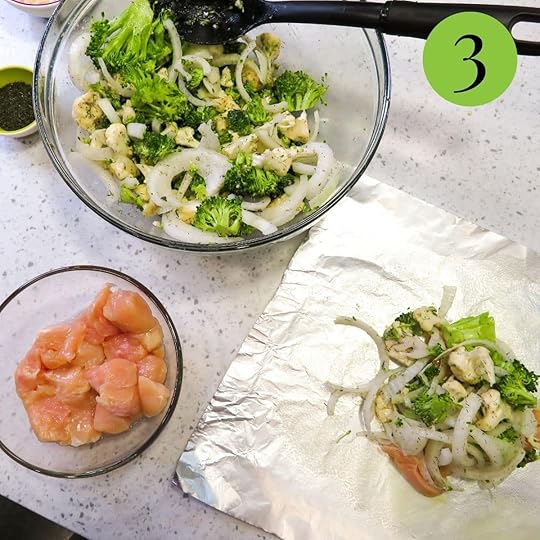
3. Place 3 ounces of chicken in to each of the foil squares. Add the cauliflower, broccoli and onion evenly to the 4 different foil squares.
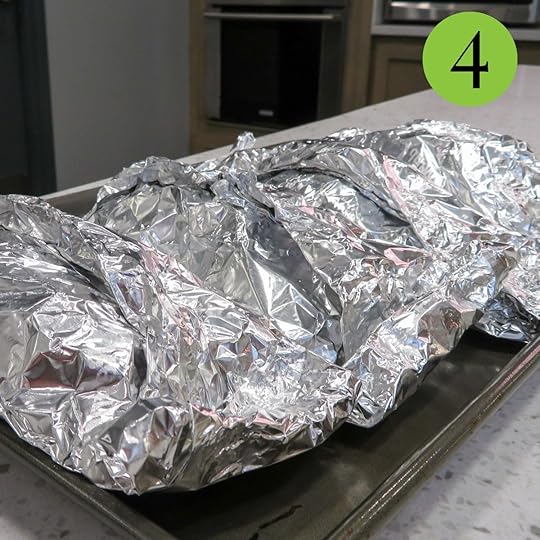
4. Fold the edges of the foil over the chicken and vegetables to make a packet.
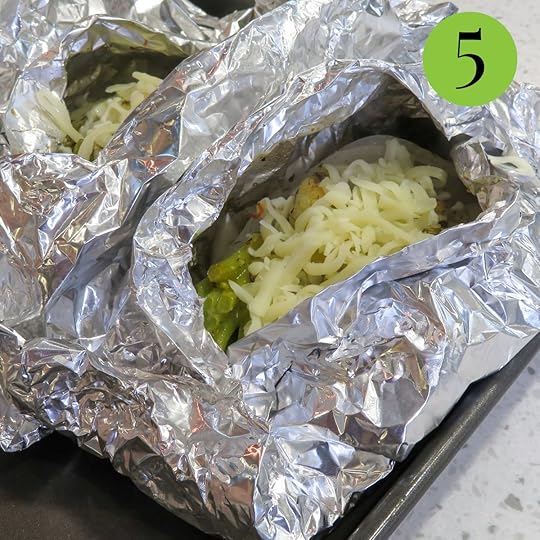
5. Bake for 45 minutes. Open the packets and sprinkle 2 tablespoon of cheese per packet over the chicken and vegetables. Leave the packets open and return to the oven for 2-3 minutes.
Hint: To ensure even cooking and prevent the vegetables from becoming too soft, try to cut all the ingredients into uniform pieces. This will help everything cook at the same rate and enhance the overall texture of the dish.
Substitutions For Chicken Recipes In Foil PacketsIf you're looking to customize your Foil Packet meal to better suit your taste preferences or dietary needs, here are some thoughtful substitution ideas. These alternatives still keep the recipe kidney-friendly while adding a fresh twist.
Chicken Thighs instead of Chicken Breast: For a juicier option, use skinless, boneless chicken thighs which are also a great source of protein.Zucchini instead of Broccoli: Substitute with chopped zucchini to add a different texture and mild flavor without increasing potassium levels.Parmesan Cheese instead of Mozzarella Cheese: Swap for a small amount of grated parmesan to achieve a robust, savory flavor while keeping phosphorus in check.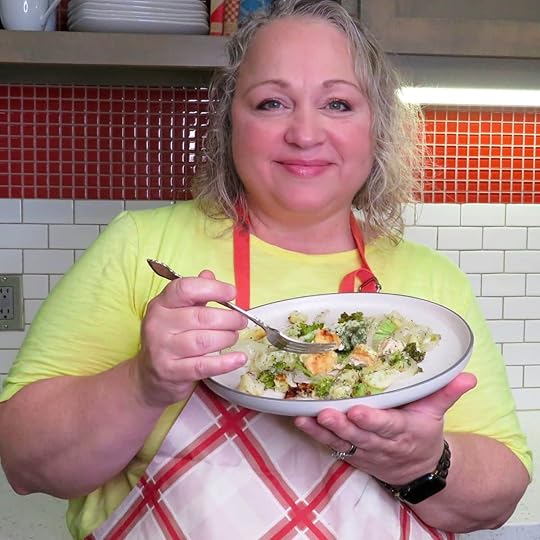 Variations for Ranch Chicken Foil Packets
Variations for Ranch Chicken Foil PacketsIf you want to put a new spin on your Chicken Ranch Foil Packets, here are some exciting variations. These ideas allow you to explore different flavors and textures while maintaining a kidney-friendly profile.
Lemon Herb Chicken Packets - Add a squeeze of fresh lemon juice and some chopped rosemary or thyme for a bright and aromatic twist.Mexican-Style Packets - Incorporate cumin, paprika, and a sprinkle of cilantro for a flavorful southwestern influence.Garlic Parmesan Packets - Mix in minced garlic and replace the ranch seasoning with a blend of Italian herbs and grated parmesan for a rich, savory option.I like using some of these variations often, no one likes to eat the same thing over and over again, so these variations work well.
StorageRefrigeration: Store cooked foil packets in the refrigerator for up to 3 days. Simply wrap them tightly in aluminum foil or transfer to an airtight container.Freezing: For longer storage, place the cooked foil packets in a freezer-safe bag or container. They can be frozen for up to 2 months. Thaw in the refrigerator overnight before reheating.Meal Prep: Assemble the foil packets with raw ingredients and store them in the refrigerator for up to 24 hours before cooking. This is a great option for preparing meals in advance.Top tipTo enhance the flavors and ensure even cooking, preheat the oven and place the foil packets on a baking sheet. This helps distribute heat more evenly and makes it easier to transfer the packets in and out of the oven.
FAQs for Chicken foil packetsCan I prepare and cook these foil packets on a grill instead of an oven?Absolutely! You can grill the foil packets over medium heat for 20-25 minutes, turning them occasionally to ensure even cooking.
Are there any other vegetables I can use in place of cauliflower and broccoli?Yes, you can substitute with other kidney-friendly vegetables such as green beans, bell peppers, or zucchini to keep the dish varied and interesting. You'll enjoy making these ranch chicken foil packets.
Related Chicken EntreesLooking for other recipes like this? Try these:
Chicken with Broccoli and Onion Sauce ZYD RecipeGoat Cheese, Basil, and Bacon Chicken Breast For Kidney Disease Diet - ZYDPairing with Ranch Chicken Foil PacketsThese are my favorite dishes to serve with Chicken Foil Packets:
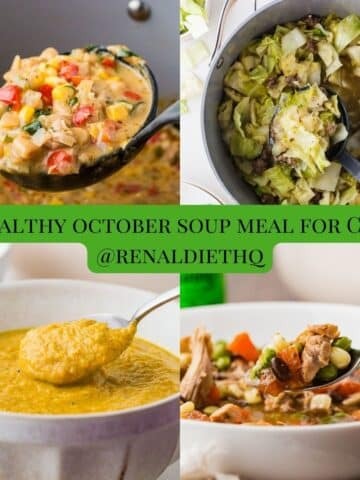 Kidney Friendly Soups
Kidney Friendly Soups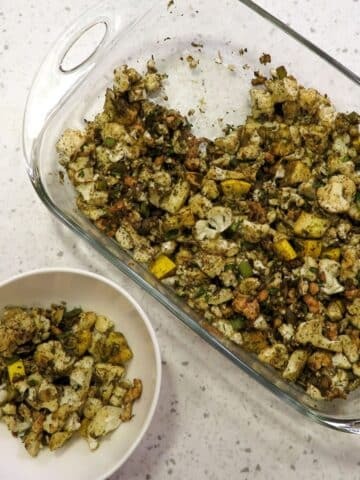 Cauliflower Stuffing with Ground Turkey
Cauliflower Stuffing with Ground Turkey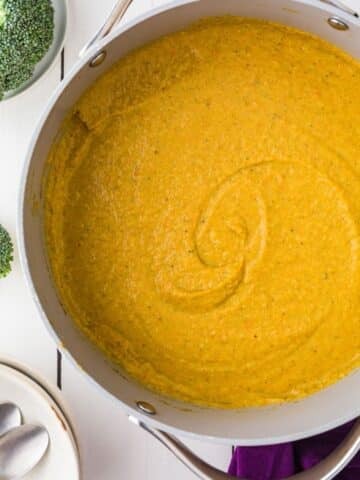 Broccoli Cauliflower Soup
Broccoli Cauliflower Soup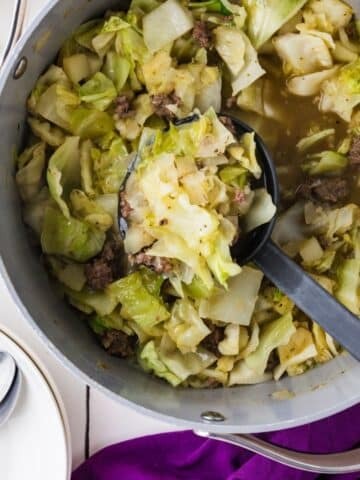 Cabbage Sausage and Potato SoupPrintRecipeChicken Ranch Foil Packets [image error] Print Recipe [image error] Pin Recipe const share_pin_buttons = document.getElementsByClassName( 'share-pin button' ); if ( share_pin_buttons ) { for ( let share_key = 0; share_key < share_pin_buttons.length; share_key++ ) { share_pin_buttons[share_key].addEventListener( 'click', (e) => { e.stopPropagation(); window.open(e.target.dataset.href,'targetWindow','toolbar=no,location=no,status=no,menubar=no,scrollbars=yes,resizable=yes,width=500,height=500'); return false; } ); } }
Cabbage Sausage and Potato SoupPrintRecipeChicken Ranch Foil Packets [image error] Print Recipe [image error] Pin Recipe const share_pin_buttons = document.getElementsByClassName( 'share-pin button' ); if ( share_pin_buttons ) { for ( let share_key = 0; share_key < share_pin_buttons.length; share_key++ ) { share_pin_buttons[share_key].addEventListener( 'click', (e) => { e.stopPropagation(); window.open(e.target.dataset.href,'targetWindow','toolbar=no,location=no,status=no,menubar=no,scrollbars=yes,resizable=yes,width=500,height=500'); return false; } ); } } 5 Stars 4 Stars 3 Stars 2 Stars 1 Star
No reviews
Enjoy a delicious and kidney-friendly meal with these Chicken Ranch Foil Packets. Featuring tender chicken, fresh vegetables, and a hint of ranch seasoning, this recipe is easy to prepare and perfect for those managing CKD. Convenient and nutritious, it's an excellent choice for a satisfying dinner.
  Author: Mathea Ford, MBA, RDN, LD Prep Time: 15 Cook Time: 45 Total Time: 1 hour Yield: 4 servings Category: Dinner Method: Oven Cuisine: American Diet: Low Salt Ingredients 6 tbsp butter, melted2 tbsp low sodium ranch seasoning½ tsp pepper12 ounces chicken breast, cut into 1 - 1 ½ in pieces2 cups cauliflower, chopped into pieces2 cups broccoli1 ½ cups sliced onions½ cup Mozzarella cheese1 tbsp fresh dill Cook Mode Prevent your screen from going dark Instructions Preheat the oven to 425 degrees.In a small bowl, mix the ranch seasoning, butter, and pepper together. Cut 4 large pieces (about 12 inches square) of foil.Spray the 4 foil squares with cooking spray.Place the cauliflower, broccoli and onion into a bowl. Drizzle with the ranch butter and toss to coat evenly.Place 3 ounces of chicken in to each of the foil squares. Add the cauliflower, broccoli and onion evenly to the 4 different foil squares.Fold the edges of the foil over the chicken and vegetables to make a packet.Bake for 45 minutes. Open the packets and sprinkle 2 tablespoon of cheese per packet over the chicken and vegetables. Leave the packets open and return to the oven for 2-3 minutes.Remove the foil packets from the oven, and serve your meal. NotesThese can be made over a campfire or in the kitchen. You will love how easy they are to make and clean up!
(function(){ window.addEventListener( 'message', function( event ){ if ( ( 'https://nutrifox.com' !== event.origin && 'https://nutrifox.test' !== event.origin ) || typeof event.data !== 'string' ) { return; } var payload = JSON.parse( event.data ); switch ( payload.event ) { case 'setHeight': var iframe = document.getElementById( 'nutrifox-label-' + payload.recipeId ); iframe.style.height = payload.height + 'px'; break; } } );}()); Did you make this recipe?Share a photo and tag us â we can't wait to see what you've made!
window.trCommon={"minRating":6,"ajaxurl":"https:\/\/www.renaldiethq.com\/wp-admin\/admin-... = window.TastyRecipes || {};window.TastyRecipes.smoothScroll = {init() {document.addEventListener( 'click', ( e ) => {let anchor = e.target;if ( anchor.tagName !== 'A' ) {anchor = anchor.closest( 'a.tasty-recipes-scrollto' );}if ( ! anchor || ! anchor.classList.contains( 'tasty-recipes-scrollto' ) ) {return;}const elementHref = anchor.getAttribute( 'href' );if ( ! elementHref ) {return;}e.preventDefault();this.goToSelector( elementHref );});},goToSelector( selector ) {const element = document.querySelector( selector );if ( ! element ) {return;}element.scrollIntoView( { behavior: 'smooth' } );}};document.addEventListener('DOMContentLoaded',() => window.TastyRecipes.smoothScroll.init());(function(){document.querySelectorAll('[data-tr-ingredient-checkbox]').forEach(function(el) {var input = el.querySelector('.tr-ingredient-checkbox-container input[type="checkbox"]');if ( ! input ) {return;}if (input.checked) {el.dataset.trIngredientCheckbox = 'checked';}el.addEventListener('click', function(event) {if ( 'A' === event.target.nodeName|| 'INPUT' === event.target.nodeName|| 'LABEL' === event.target.nodeName ) {return;}input.click();});input.addEventListener('change', function() {el.dataset.trIngredientCheckbox = input.checked ? 'checked' : '';});});}());window.TastyRecipes = window.TastyRecipes || {};window.TastyRecipes.cookMode = {wakeLockApi: false,wakeLock: false,cookModeSelector: '.tasty-recipes-cook-mode',init() {if ("wakeLock" in navigator && "request" in navigator.wakeLock) {this.wakeLockApi = navigator.wakeLock;}const cookModes = document.querySelectorAll(this.cookModeSelector);if (cookModes.length > 0) {for (const cookMode of cookModes) {if (this.wakeLockApi) {cookMode.querySelector('input[type="checkbox"]').addEventListener("change", event => {this.checkboxChange(event.target);}, false);} else {cookMode.style.display = "none";}}}},checkboxChange(checkbox) {if (checkbox.checked) {this.lock();} else {this.unlock();}},setCheckboxesState(state) {const checkboxes = document.querySelectorAll(this.cookModeSelector + ' input[type="checkbox"]');for (const checkbox of checkboxes) {checkbox.checked = state;}},async lock() {try {this.wakeLock = await this.wakeLockApi.request("screen");this.wakeLock.addEventListener("release", () => {this.wakeLock = false;this.setCheckboxesState(false);});this.setCheckboxesState(true);} catch (error) {this.setCheckboxesState(false);}},unlock() {if (this.wakeLock) {this.wakeLock.release();this.wakeLock = false;}this.setCheckboxesState(false);}};(function(callback) {if (document.readyState !== "loading") {callback();} else {document.addEventListener("DOMContentLoaded", callback);}})(() => {window.TastyRecipes.cookMode.init();});window.TastyRecipes = window.TastyRecipes || {};window.TastyRecipes.staticTooltip = {element: null,tooltipElement: null,deleting: false,init( element ) {if ( this.deleting ) {return;}this.element = element;this.buildElements();},destroy() {if ( ! this.tooltipElement || this.deleting ) {return;}this.deleting = true;this.tooltipElement.classList.remove( 'opened' );setTimeout( () => {this.tooltipElement.remove();this.deleting = false;}, 500 );},buildElements() {const tooltipElement = document.createElement( 'div' );tooltipElement.classList.add( 'tasty-recipes-static-tooltip');tooltipElement.setAttribute( 'id', 'tasty-recipes-tooltip' );const currentTooltipElement = document.getElementById( 'tasty-recipes-tooltip' );if ( currentTooltipElement ) {document.body.replaceChild( tooltipElement, currentTooltipElement );} else {document.body.appendChild( tooltipElement );}this.tooltipElement = document.getElementById( 'tasty-recipes-tooltip' );},show() {if ( ! this.tooltipElement ) {return;}const tooltipTop = this.element.getBoundingClientRect().top+ window.scrollY- 10 // 10px offset.- this.tooltipElement.getBoundingClientRect().height;const tooltipLeft = this.element.getBoundingClientRect().left- ( this.tooltipElement.getBoundingClientRect().width / 2 )+ ( this.element.getBoundingClientRect().width / 2 ) - 1;const posLeft = Math.max( 10, tooltipLeft );this.maybeRemoveTail( posLeft !== tooltipLeft );this.tooltipElement.setAttribute( 'style', 'top:' + tooltipTop + 'px;left:' + posLeft + 'px;' );this.tooltipElement.classList.add( 'opened' );},maybeRemoveTail( removeTail ) {if ( removeTail ) {this.tooltipElement.classList.add( 'tr-hide-tail' );} else {this.tooltipElement.classList.remove( 'tr-hide-tail' );}},changeMessage( message ) {if ( ! this.tooltipElement ) {return;}this.tooltipElement.innerHTML = message;}};window.TastyRecipes.ajax = {sendPostRequest( url, data, success, failure ) {const xhr = new XMLHttpRequest();xhr.open( 'POST', url, true );xhr.send( this.preparePostData( data ) );xhr.onreadystatechange = () => {if ( 4 !== xhr.readyState ) {return;}if ( xhr.status === 200 ) {success( JSON.parse( xhr.responseText ) );return;}failure( xhr );};xhr.onerror = () => {failure( xhr );};},preparePostData( data ) {const formData = new FormData();for ( const key in data ) {formData.append( key, data[key] );}return formData;},};window.TastyRecipes.ratings = {defaultRating: 0,currentRatingPercentage: 100,savingRating: false,init( minRating ) {this.minRating = minRating;this.formWatchRating();this.closeTooltipWhenClickOutside();this.addBodyClassBasedOnSelectedRating();this.backwardCompFormRatingPosition();},formWatchRating() {const ratings = document.querySelectorAll('.tasty-recipes-no-ratings-buttons [data-rating]');if ( ratings.length <= 0 ) {return;}for ( const rating of ratings ) {rating.addEventListener( 'click', event => {event.preventDefault();this.defaultRating = event.target.closest( '.checked' ).dataset.rating;this.setCheckedStar( event.target );this.maybeSendRating( this.defaultRating, event.target );this.setRatingInForm( this.defaultRating );} );}},closeTooltipWhenClickOutside() {window.addEventListener( 'click', e => {// Bailout (don't remove the tooltip) when the clicked element is a rating star, or it's the tooltip itself.if ( e.target.closest( '.tasty-recipes-rating' ) || e.target.classList.contains( 'tasty-recipes-static-tooltip' ) ) {return;}window.TastyRecipes.staticTooltip.destroy();} );}, setRatingInForm( rating ) {const ratingInput = document.querySelector( '#respond .tasty-recipes-rating[value="' + rating + '"]' );if ( ! ratingInput ) {return;}ratingInput.click();},addBodyClassBasedOnSelectedRating() {const ratingInputs = document.querySelectorAll( 'input.tasty-recipes-rating' );if ( ! ratingInputs ) {return;}for ( const ratingInput of ratingInputs ) {ratingInput.addEventListener( 'click', currentEvent => {const selectedRating = currentEvent.target.getAttribute( 'value' );this.handleBodyClassByRating( selectedRating );this.toggleCommentTextareaRequired( selectedRating );} );}},handleBodyClassByRating( rating ) {if ( rating < this.minRating ) {document.body.classList.remove( 'tasty-recipes-selected-minimum-rating' );return;}document.body.classList.add( 'tasty-recipes-selected-minimum-rating' );},toggleCommentTextareaRequired( rating ) {const commentTextarea = document.getElementById( 'comment' );if ( ! commentTextarea ) {return;}if ( rating < this.minRating ) {commentTextarea.setAttribute( 'required', '' );return;}commentTextarea.removeAttribute( 'required' );},maybeSendRating( rating, element ) {if ( this.savingRating === rating ) {return;}this.savingRating = rating;window.TastyRecipes.staticTooltip.init( element );const recipeCardElement = element.closest( '.tasty-recipes' );if ( ! recipeCardElement ) {window.TastyRecipes.staticTooltip.destroy();return;}window.TastyRecipes.ajax.sendPostRequest(window.trCommon.ajaxurl,{action: 'tasty_recipes_save_rating',rating,nonce: window.trCommon.ratingNonce,post_id: window.trCommon.postId,recipe_id: recipeCardElement.dataset.trId,},( response ) => {window.TastyRecipes.staticTooltip.changeMessage( response.data.message );window.TastyRecipes.staticTooltip.show();this.updateAverageText( response.data, recipeCardElement );this.maybeFillCommentForm( response.data );// Hide the tooltip after 5 seconds.setTimeout( () => {this.maybeResetTooltip( recipeCardElement, response.data, rating );}, 5000 );},() => {this.resetTooltip( recipeCardElement );});},updateAverageText( data, recipeCardElement ) {if ( ! data.average ) {return;}this.setRatingPercent( data );if ( ! data.count ) {return;}const quickLink = document.querySelector( '.tasty-recipes-rating-link' );if ( quickLink ) {this.setTextInContainer( quickLink, data );this.setPartialStar( quickLink );}const cardStars = recipeCardElement.querySelector( '.tasty-recipes-ratings-buttons' );cardStars.dataset.trDefaultRating = data.average;this.setTextInContainer( recipeCardElement.querySelector( '.tasty-recipes-rating' ), data );},setTextInContainer( container, data ) {if ( ! container ) {return;}if ( data.label ) {const ratingLabelElement = container.querySelector( '.rating-label' );if ( ratingLabelElement ) {ratingLabelElement.innerHTML = data.label;}return;}const averageElement = container.querySelector( '.average' );if ( averageElement ) {averageElement.textContent = data.average;}const countElement = container.querySelector( '.count' );if ( countElement ) {countElement.textContent = data.count;}},setPartialStar( container ) {const highestStar = container.querySelector( '[data-rating="' + Math.ceil( this.defaultRating ) + '"]' );if ( highestStar ) {highestStar.dataset.trClip = this.currentRatingPercentage;}},setRatingPercent( data ) {this.defaultRating = data.average.toFixed( 1 );const parts = data.average.toFixed( 2 ).toString().split( '.' );this.currentRatingPercentage = parts[1] ? parts[1] : 100;if ( this.currentRatingPercentage === '00' ) {this.currentRatingPercentage = 100;}},setCheckedStar( target ) {const cardRatingContainer = target.closest( '.tasty-recipes-ratings-buttons' );const selectedRatingElement = cardRatingContainer.querySelector( '[data-tr-checked]' );if ( selectedRatingElement ) {delete selectedRatingElement.dataset.trChecked;}const thisStar = target.closest( '.tasty-recipes-rating' );thisStar.dataset.trChecked = 1;thisStar.querySelector( '[data-tr-clip]' ).dataset.trClip = 100;},maybeFillCommentForm( data ) {if ( ! data.comment || ! data.comment.content ) {return;}const commentForm = document.querySelector( '#commentform' );if ( ! commentForm ) {return;}const commentBox = commentForm.querySelector( '[name=comment]' );if ( ! commentBox || commentBox.value ) {return;}// Add comment details for editing.commentBox.innerHTML = data.comment.content;if ( data.comment.name ) {commentForm.querySelector( '[name=author]' ).value = data.comment.name;commentForm.querySelector( '[name=email]' ).value = data.comment.email;}},maybeResetTooltip( recipeCardElement, data, rating ) {if ( this.savingRating === rating ) {this.resetTooltip( recipeCardElement, data );}},resetTooltip( recipeCardElement, data ) {window.TastyRecipes.staticTooltip.destroy();this.savingRating = false;// Reset the default rating.const cardRatingContainer = recipeCardElement.querySelector( '.tasty-recipes-ratings-buttons' );if ( cardRatingContainer ) {this.defaultRating = ( data && data.average ) ? data.average.toFixed(1) : cardRatingContainer.dataset.trDefaultRating;cardRatingContainer.dataset.trDefaultRating = this.defaultRating;this.resetSelectedStar( cardRatingContainer, data );}},resetSelectedStar( cardRatingContainer ) {const selectedRatingElement = cardRatingContainer.querySelector( '[data-rating="' + Math.ceil( this.defaultRating ) + '"]' );if ( selectedRatingElement ) {selectedRatingElement.querySelector( '[data-tr-clip]' ).dataset.trClip = this.currentRatingPercentage;selectedRatingElement.parentNode.dataset.trChecked = 1;}const previousSelectedElement= cardRatingContainer.querySelector( '[data-tr-checked]' );if ( previousSelectedElement ) {const currentSelectedRating = previousSelectedElement.querySelector('[data-rating]');if ( currentSelectedRating !== selectedRatingElement ) {delete previousSelectedElement.dataset.trChecked;}}},backwardCompFormRatingPosition() {const ratingsButtons = document.querySelector( '#respond .tasty-recipes-ratings-buttons, #tasty-recipes-comment-rating .tasty-recipes-ratings-buttons' );if ( ! ratingsButtons ) {return;}const ratingsButtonsStyles = window.getComputedStyle(ratingsButtons);if ( ! ratingsButtonsStyles.display.includes( 'flex' ) ) {ratingsButtons.style.direction = 'rtl';}if ( typeof tastyRecipesRating !== 'undefined' ) {// Select the rating that was previously selected in admin.ratingsButtons.querySelector( '.tasty-recipes-rating[value="' + tastyRecipesRating + '"]' ).checked = true;}const ratingSpans = ratingsButtons.querySelectorAll( '.tasty-recipes-rating' );for (const ratingSpan of ratingSpans) {ratingSpan.addEventListener( 'click', event => {if ( ratingSpan === event.target ) {return;}ratingSpan.previousElementSibling.click();} );}}};(function(callback) {if (document.readyState !== "loading") {callback();} else {window.addEventListener( 'load', callback );}})(() => {window.TastyRecipes.ratings.init( window.trCommon ? window.trCommon.minRating : 4 );});Recipe Card powered by [image error] Check Out Our Meal Plans For People With Chronic Kidney Disease (CKD)The post Chicken Ranch Foil Packets appeared first on Renal Diet HQ.
September 30, 2024
Kidney Friendly Soups
Kidney-friendly soups are low in sodium, potassium, and phosphorus but still full of flavor and nutrients. Weâve created a collection of easy-to-make, hearty soups that are perfect for the fall season. Using vegetables like cauliflower, pumpkin, and zucchini, along with flavorful herbs, these soups fit right into a CKD-friendly diet. If youâre looking for delicious, healthy options that make managing CKD easier, this article will guide you to the perfect soups for you.
After witnessing my mother's struggle to find reliable dietary information following her CKD diagnosis, I was inspired to create this platform to simplify the fundamentals of the renal diet for others in similar situations. With over 25 years of experience developing CKD-friendly recipes, I dedicate numerous hours each year to continuing education, staying informed about the latest research and developments in this field. We prioritize providing evidence-based content and include links to authoritative sources when relevant to ensure you receive trustworthy and accurate information.
Fill Out The Form Below To Get A Copy Of The Meals In Your Inbox
Creating a Kidney Friendly Soup that is both delightful and kidney-friendly requires thoughtful selection of dishes, and this menu does just that, making it a wonderful celebration for those managing chronic kidney disease (CKD).
The Southwestern Chicken Soup is a kidney-friendly weeknight meal that's both light and flavorful, making it ideal for those managing chronic kidney disease. Featuring ingredients like low-sodium chicken broth, black beans, and a zesty hit of lime juice, this dish comes together easily and offers a warm, comforting bowl. With just a few simple steps, you can have a delicious, wholesome dinner simmering on your stove that aligns with your dietary needs.
This Southwestern Chicken Chili is perfect for someone with CKD because it's low in sodium while still packed with rich flavors and satisfying ingredients - and it's a recipe for 4 servings. With lean protein from chicken, fiber-rich beans, and a medley of kidney-friendly vegetables, it offers a balanced, hearty meal. The creamy texture and Southwestern spices make it a delicious option that doesnât compromise on taste or health
The Roasted Cauliflower and Pumpkin Soup is a delicious, creamy blend of roasted vegetables that brings out deep, caramelized flavors perfect for a comforting meal. This kidney-friendly recipe combines the earthy taste of cauliflower and the natural sweetness of pumpkin with a medley of spices, making it both nutritious and satisfying.
Cabbage sausage and potato soup is a hearty and flavorful dish that's perfect for people with Chronic Kidney Disease. This recipe uses lean ground beef and low-sodium broth, making it a kidney-friendly option. The combination of cabbage, potatoes, and homemade sausage creates a comforting meal without the extra sodium.
Indulge in this creamy broccoli and cauliflower soup, a delicious blend of hearty vegetables. It's a flavorful dish that's gentle on the kidneys, making it perfect for those with CKD. Easy to prepare and rich in taste, it's sure to become a favorite in your home. You'll love the ease and taste of this hearty soup.
Together, these dishes create Kidney Friendly Soups that are not only safe and satisfying for those with CKD but also a delightful culinary experience for all guests.
Kidney-Friendly SoupsThe soups are perfect for someone with CKD because they are carefully crafted to be both kidney-friendly and delicious. They feature wholesome ingredients like cauliflower, pumpkin, zucchini, and lean chicken, which provide essential nutrients while being low in sodium, potassium, and phosphorus. These soups offer rich flavors by using herbs and spices such as garlic, cumin, and cilantro, eliminating the need for excess salt. For someone with CKD, enjoying meals like these can help support kidney health while still satisfying cravings for hearty, comforting dishes, making it easier to stick to a renal diet.
Southwestern Chicken Soup: The soup is loaded with vegetables like corn, bell peppers, and onions, and seasoned with cumin, garlic, and cilantro for a flavorful punch. The recipe is low in sodium, making it ideal for individuals with Chronic Kidney Disease (CKD). It also offers flexibility, allowing for substitutions like chicken breasts or thighs. The recipe is both nourishing and easy to prepare, while being suitable for a renal diet.Southwestern Chicken Chili: Southwestern Chicken Chili, packed with flavorful ingredients like tomatoes, corn, and black beans. The recipe is designed to be low in sodium, making it suitable for individuals with Chronic Kidney Disease (CKD). It features tender chicken, vibrant spices, and healthy vegetables, offering a satisfying meal while maintaining kidney health. This recipe is easy and quick to prepare, making it a convenient option for busy days.Cauliflower Pumpkin Soup: Cauliflower Pumpkin Soup, a low-sodium, kidney-friendly option for those with Chronic Kidney Disease (CKD). It combines the earthy flavors of cauliflower with the richness of pumpkin, seasoned with spices like nutmeg and garlic for warmth. The soup is smooth, easy to digest, and packed with nutrients while being mindful of CKD dietary restrictions. The recipe is simple, requiring minimal ingredients and time.Cabbage Sausage and Potato Soup: a recipe for Cabbage Sausage and Potato Soup, tailored for those with Chronic Kidney Disease (CKD). The soup combines hearty ingredients like cabbage, potatoes, and kidney-friendly sausage. It emphasizes a low-sodium approach while still being flavorful, thanks to herbs and seasonings. The soup is designed to be nutritious and satisfying while adhering to dietary restrictions for kidney health.Cauliflower Broccoli Soup: designed for those with Chronic Kidney Disease (CKD). This creamy, low-sodium soup combines nutritious broccoli and cauliflower, with a rich yet kidney-friendly flavor profile. The recipe emphasizes easy preparation and includes spices and herbs for added depth without high sodium content. It's perfect for maintaining kidney health while enjoying a comforting, warm dish.Check Out Our Meal Plans For People With Chronic Kidney Disease (CKD)Recipes For These Kidney Friendly SoupsSouthwestern Chicken Soup
Southwestern Chicken Chili
Cauliflower Pumpkin Soup
Cabbage Sausage and Potato Soup
Broccoli Cauliflower SoupCheck Out Our Meal Plans For People With Chronic Kidney Disease (CKD)Recent Kidney Friendly Recipes
 Kidney Friendly Soups
Kidney Friendly Soups Cauliflower Stuffing with Ground Turkey
Cauliflower Stuffing with Ground Turkey Broccoli Cauliflower Soup
Broccoli Cauliflower Soup Cabbage Sausage and Potato Soup
Cabbage Sausage and Potato SoupThe post Kidney Friendly Soups appeared first on Renal Diet HQ.
September 27, 2024
Frozen Treats for Chronic Kidney Disease Patients-Podcast

We all scream for ice cream! Whether it's a scoop of classic vanilla, a swirl of mint chocolate chip, or a cup of frozen yogurt, ice cream remains one of the most beloved treats worldwide. But what if you have Chronic Kidney Disease (CKD)? You might be worried that frozen desserts are off-limits, but don't fret! There are still plenty of delicious, kidney-friendly options that wonât compromise your health.
For More Recipes and Ideas --->> Get Your Free Meals and Recipes That Are Perfect for Pre-Dialysis Diets, Pre-Dialysis with Diabetes, or Dialysis Diets.
Iâm Mathea Ford, a registered dietitian nutritionist specializing in CKD, and Iâm here to help you navigate these choices. Together, we can transform your eating habits and boost your overall well-being while keeping things tasty. Letâs take a deep dive into the world of frozen treats for CKD patients and find the best options that allow you to indulge while staying on track.
Why Traditional Ice Cream May Not Be Ideal for CKD PatientsIce cream is a popular treat, but for those with CKD, traditional dairy-based ice cream might not be the best option. Dairy ice creams can contain high levels of phosphorus, potassium, and sodiumâminerals that can put extra strain on your kidneys and worsen CKD symptoms. If you have issues with high phosphorus or potassium, traditional ice cream might not be your friend.
Fortunately, food science has evolved, and there are many healthier alternatives available today. Plant-based ice creams made from nut milks like almond or coconut milk offer the same creamy texture without the harmful heavy dairy ingredients. They often come with added health benefits, too, providing essential nutrients such as vitamins A and C, iron, calcium, and magnesium. These non-dairy options are perfect for CKD patients looking for frozen treats that won't negatively impact their health.
Healthier Alternatives to Dairy-Based Ice CreamThe good news? You donât have to say goodbye to ice cream forever. There are plenty of alternatives available that are both tasty and kidney-friendly. Here are some great options to consider:
Plant-Based Ice Creams: Almond or coconut milk-based ice creams are delicious, creamy, and free from the phosphorus and potassium overload found in dairy.Sorbet and Sherbets: These fruit-based desserts are light, refreshing, and often lower in calories, making them great for CKD patients.Frozen Yogurt and Fruit Bars: These options can be lower in fat and phosphorus while still providing a satisfying treat. For example, try a Honeydew Sorbet (recipe available on the blog) for a refreshing, sweet alternative.By experimenting with different recipes and flavors, you can still enjoy ice cream while keeping your kidneys healthy.
Is Ice Cream High in Potassium?If you're managing CKD, you know how important it is to monitor your potassium intake, especially when it comes to frozen desserts. While many vanilla or chocolate store-bought ice creams tend to have lower potassium levels, flavors like peanut butter swirl can dramatically increase your potassium intake.
Reading labels carefully and sticking to smaller portions can help you manage your potassium levels without giving up your favorite treats. Another good alternative is sorbet, which generally contains much less potassium and allows you to satisfy your sweet tooth without overloading on this mineral.
Low-Phosphorus Ice Cream Options for CKD PatientsPhosphorus is another nutrient that CKD patients need to watch. Traditional dairy ice creams can be high in phosphorus, but there are many low-phosphorus alternatives that taste just as good. Here are some examples of low-phosphorus ice creams:
Halo Top Creamery Caramel Macchiato: Low in phosphorus due to its dairy-free ingredients.Arctic Zero Maple Vanilla: A great option thatâs low in phosphorus and high in fiber.So Delicious Coconut Milk Almond Crunch: Made with coconut milk, this is another dairy-free, low-phosphorus treat.Talenti Almond Chocolate Gelato: This dairy-free gelato is made with coconut milk and keeps phosphorus levels low.Enlightened Peanut Butter Fudge: Dairy-free and high in fiber, this option is low in phosphorus.These ice creams allow CKD patients to enjoy frozen treats without worrying about phosphorus levels. Always check labels and consult your dietitian for the best options for your specific needs.
Low-Potassium Ice Cream and Frozen Dessert OptionsManaging potassium intake is critical for CKD patients, but that doesnât mean you canât indulge in ice cream or other frozen desserts. Here are some low-potassium frozen treats that are perfect for CKD patients:
Neapolitan Ice Cream: Some varieties contain only 34 milligrams of potassium per serving.Popsicles: These typically contain less than 100 milligrams of potassium per serving.Coconut Milk Ice Cream: A dairy-free, low-sugar option thatâs gentle on potassium levels.Sorbet: Sorbet can contain as little as 40 milligrams of potassium per cup, making it a safe option.Checking the labels is essential to ensure that the potassium content stays within a safe range. These desserts allow CKD patients to indulge in frozen treats while maintaining proper potassium levels.
Delicious Kidney-Safe Frozen Dessert IdeasIf you're looking to switch things up beyond traditional ice creams, here are some simple, kidney-safe frozen desserts you can make at home:
Frozen Grapes: Rinse, dry, and freeze grapes overnight for a cool, sweet snack.Peach Slush: Freeze sliced, peeled peaches and blend them for a refreshing peach slush. Add a little artificial sweetener if you prefer more sweetness.Cranberry Ice: Crush ice in a blender and pour in cranberry juice for a delicious, kidney-friendly shaved ice treat.Lemonade Freeze: Freeze sugar-free lemonade in ice cube trays, then blend for a tart, frozen drink.Iced Berry Bliss: Blend your favorite berries and pour them into ice pop molds. Freeze for a refreshing, fruity treat. Berries like raspberries, strawberries, and blueberries are all excellent choices.These kidney-friendly desserts are great for cooling down on a hot day while keeping your diet on track.
Satisfy Your Sweet Tooth While Maintaining Kidney HealthFrozen desserts can still be a part of your life even with CKD. By choosing low-potassium, low-phosphorus alternatives and paying attention to portion sizes, you can indulge without putting extra strain on your kidneys. Remember to read labels carefully, and consult with your dietitian to ensure that your frozen treats fit within your dietary needs.
Ready to explore more delicious, kidney-friendly recipes? Visit RenalDietHQ.com for more inspiration, tips, and recipes to keep your diet both tasty and healthy.
Learn more about Family Friendly Kidney Diet Meals-Podcast
Learn more about Meal Prep 101 for CKD How to plan and prepare meals for the week-Podcast
The post Frozen Treats for Chronic Kidney Disease Patients-Podcast appeared first on Renal Diet HQ.
Cauliflower Stuffing with Ground Turkey
You love to eat the stuffing at meals, especially around the holidays but you know it's got a ton of carbs and can be high in sodium. Not this cauliflower stuffing. You get a generous portion and you can eat a lot of it. Try this out with your next meal and see if you don't love it. This recipe might have a lot of cauliflower, but it's delicious and tasty and easy to make. You can eat a big portion and still have lots of room left for other food and drink.
When my dad was diagnosed with Stage 3 kidney disease in his 80s, I helped him improve his diet, which slowed the disease's progression. With over 20 years of experience, Iâve developed flavorful, evidence-based recipes that meet the specific nutritional needs of CKD patients. All the information I provide follows established guidelines, with reliable sources referenced when applicable.

This ground turkey and vegetable casserole is a popular dish around the holidays, offering a lighter alternative to some traditional meals without sacrificing flavor. With lean ground turkey, fresh veggies like cauliflower and squash, and a savory blend of herbs, it delivers a comforting, hearty experience while keeping calories in check. The parmesan cheese adds richness, making this dish feel indulgent, but the mix of wholesome ingredients makes it a healthier choiceâperfect for those looking to enjoy festive flavors without overindulging.
For More Recipes and Ideas --->> Get Your Free Meals and Recipes That Are Perfect for Pre-Dialysis Diets, Pre-Dialysis with Diabetes, or Dialysis Diets.
We have lots of other cauliflower recipes that you might also love - cauliflower pumpkin soup, cauliflower broccoli soup and beef shepherds pie.
[feast_advanced_jump_to]Ingredients in Cauliflower Stuffing with TurkeyThis casserole features lean ground turkey, fresh vegetables like cauliflower, summer squash, and celery, combined with a savory mix of parmesan cheese, garlic, and herbs such as thyme and marjoram. It's a flavorful and nutritious dish that brings together wholesome ingredients for a satisfying, lighter meal option.
 Ground turkey â Provides lean protein and a hearty base for the casserole.Celery â Adds a crunchy texture and fresh flavor to the dish.Onion â Enhances the savory taste with a mild, sweet flavor when cooked.Cauliflower â Offers a low-calorie vegetable option that adds volume and nutrition.Summer squash â Brings a light, slightly sweet taste and extra nutrients.Parmesan cheese â Adds a rich, salty flavor and a hint of creaminess to the casserole.Parsley â Provides a fresh, herbaceous note to brighten the dish.Marjoram â Adds a subtle, sweet, and earthy flavor to complement the other herbs.Thyme â Lends a warm, slightly peppery taste for added depth of flavor.Garlic â Infuses the casserole with a robust, savory flavor.Black pepper â Enhances the overall seasoning with a touch of spice.
Ground turkey â Provides lean protein and a hearty base for the casserole.Celery â Adds a crunchy texture and fresh flavor to the dish.Onion â Enhances the savory taste with a mild, sweet flavor when cooked.Cauliflower â Offers a low-calorie vegetable option that adds volume and nutrition.Summer squash â Brings a light, slightly sweet taste and extra nutrients.Parmesan cheese â Adds a rich, salty flavor and a hint of creaminess to the casserole.Parsley â Provides a fresh, herbaceous note to brighten the dish.Marjoram â Adds a subtle, sweet, and earthy flavor to complement the other herbs.Thyme â Lends a warm, slightly peppery taste for added depth of flavor.Garlic â Infuses the casserole with a robust, savory flavor.Black pepper â Enhances the overall seasoning with a touch of spice.See recipe card for quantities.
Instructions for Cauliflower CasseroleThis cauliflower stuffing casserole is easy to prepare by first cooking the ground turkey with celery and onion, then combining it with the vegetables, cheese, and seasonings. Once mixed, itâs baked in the oven until everything is tender and golden, making a delicious, hearty dish with minimal effort.
 Add turkey to skillet cooking over medium heat. Break apart to allow it to cook thoroughly. Add the celery and cook, stirring often, until the celery starts to get a little soft then add onion and cook, stirring often, until the onion gets soft. Continue cooking, stirring often, until the turkey is totally cooked through.
Add turkey to skillet cooking over medium heat. Break apart to allow it to cook thoroughly. Add the celery and cook, stirring often, until the celery starts to get a little soft then add onion and cook, stirring often, until the onion gets soft. Continue cooking, stirring often, until the turkey is totally cooked through.
2. In a large bowl add the cooked sausage mixture to the bowl. Mix the meat and then add remaining ingredients and mix together until blended.

3. Pour into a casserole dish, cover and put into the preheated oven. Bake at 350'F for 30-35 minutes. Check and if it's too moist, uncover and continue cooking for 5-10 minutes more, or until edges start to brown.
Hint: You can prepare the turkey and vegetable mixture ahead of time and refrigerate it, making assembly quicker when you're ready to bake.
SubstitutionsThis recipe is a perfect kidney friendly cauliflower turkey stuffing recipe but here are a couple other things you could substitute if you want to make it a little differently.
Ground turkey â Use ground chicken or lean beef as an alternative, as both provide good protein with low potassium.Cauliflower â Swap it with zucchini or green beans, which are lower in potassium and still add bulk to the dish.Parmesan cheese â Opt for a reduced-sodium cheese to help keep sodium levels in check, or use nutritional yeast for a cheesy flavor without the added salt.Summer squash â Use bell peppers or eggplant as a lower-potassium vegetable substitute.StorageTo store this casserole, allow it to cool completely, then transfer it to an airtight container. It can be kept in the refrigerator for up to 3-4 days or frozen for up to 2-3 months. When reheating, thaw the frozen casserole in the fridge overnight, and reheat in the oven at 350°F until warmed through.
Top tipChop the vegetables uniformly so they cook evenly, ensuring that each bite is well-balanced in texture and flavor. I like to make the veggies smaller pieces so they blend together and look more like stuffing.
FAQs for Turkey Cauliflower StuffingCan I prepare this casserole ahead of time?Yes, you can assemble the casserole a day in advance and store it in the refrigerator until you're ready to bake it.
Can I substitute other vegetables in this casserole?Yes, you can use lower-potassium vegetables like zucchini, green beans, or bell peppers if you need CKD-friendly substitutions.
What can I serve with this casserole?This casserole pairs well with a simple pineapple salad or a serving of skillet corn for a balanced, kidney-friendly meal.
Related Side Dishes For CKDLooking for other recipes like this? Try these:
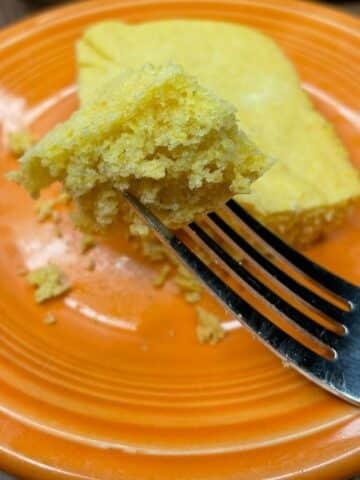 Low Sodium Cornbread
Low Sodium Cornbread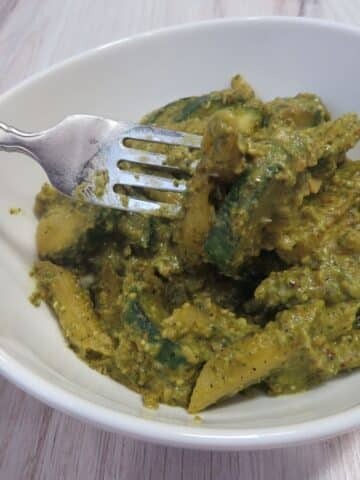 Zucchini Pesto Pasta
Zucchini Pesto Pasta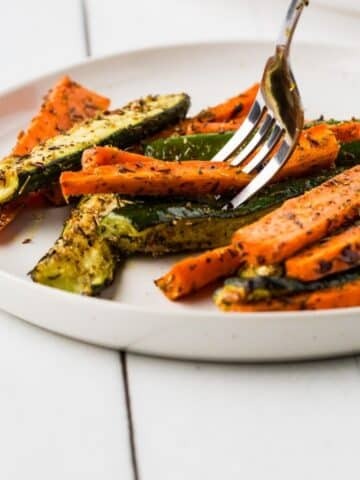 Roasted Zucchini and Carrots
Roasted Zucchini and Carrots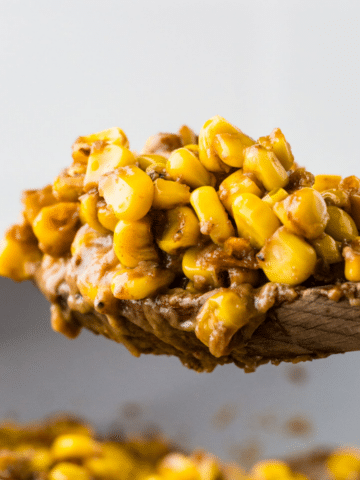 Skillet CornLooking for a Dessert?
Skillet CornLooking for a Dessert?These are my favorite desserts to serve with cauliflower stuffing:
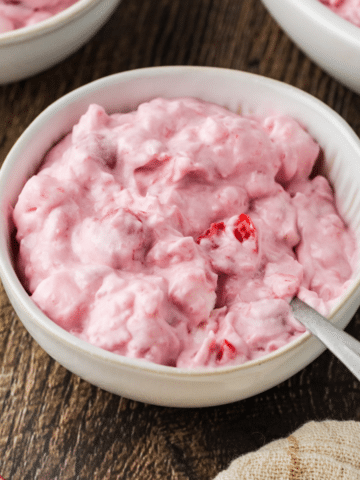 Cherry Pie Filling Salad
Cherry Pie Filling Salad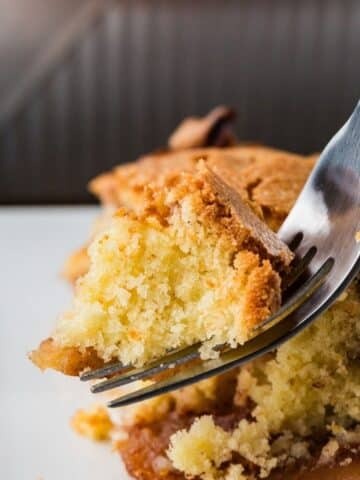 Kidney Friendly Cakes
Kidney Friendly Cakes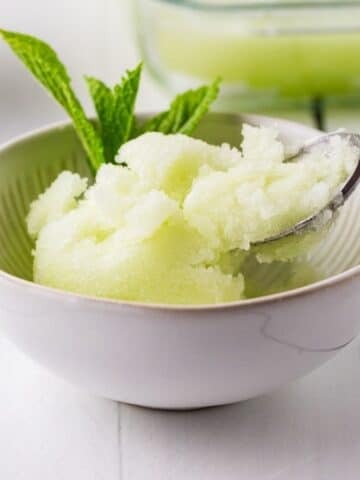 Honeydew Sorbet
Honeydew Sorbet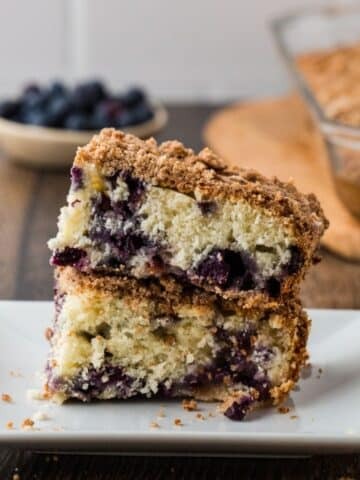 Blueberry Coffee Cake
Blueberry Coffee CakeIf you tried this Recipe or any other recipe on my website, please please leave a star rating and let me know how it goes in the comments below. I love hearing from you!
PrintRecipeCauliflower Stuffing with Turkey [image error] Print Recipe [image error] Pin Recipe const share_pin_buttons = document.getElementsByClassName( 'share-pin button' ); if ( share_pin_buttons ) { for ( let share_key = 0; share_key < share_pin_buttons.length; share_key++ ) { share_pin_buttons[share_key].addEventListener( 'click', (e) => { e.stopPropagation(); window.open(e.target.dataset.href,'targetWindow','toolbar=no,location=no,status=no,menubar=no,scrollbars=yes,resizable=yes,width=500,height=500'); return false; } ); } }
[image error] Print Recipe [image error] Pin Recipe const share_pin_buttons = document.getElementsByClassName( 'share-pin button' ); if ( share_pin_buttons ) { for ( let share_key = 0; share_key < share_pin_buttons.length; share_key++ ) { share_pin_buttons[share_key].addEventListener( 'click', (e) => { e.stopPropagation(); window.open(e.target.dataset.href,'targetWindow','toolbar=no,location=no,status=no,menubar=no,scrollbars=yes,resizable=yes,width=500,height=500'); return false; } ); } } 5 Stars 4 Stars 3 Stars 2 Stars 1 Star
5 from 1 review
This is a great low salt stuffing recipe for a gathering of eight.
Author: Mathea Ford, MBA, RDN, LD Prep Time: 20 minutes Cook Time: 50 minutes Total Time: 1 hour 10 minutes Yield: 8 Category: Entree Method: Bake Diet: Low Salt Ingredients4 oz GROUND TURKEY, FRESH, RAW
¼ cup CELERY, RAW, CHOPPED
½ cup ONION, RAW, CHOPPED
3 cup CAULIFLOWER, RAW, CHOPPED
½ cup SUMMER SQUASH, RAW, all varieties, sliced
½ cup PARMESAN CHEESE, SHREDDED
1 tbsp PARSLEY, RAW
2 tbsp MARJORAM, DRIED
2 tbsp THYME, DRIED, GROUND
1 clove GARLIC, RAW
¼ tsp PEPPER, BLACK, GROUND
Cook Mode Prevent your screen from going dark InstructionsPreheat oven to 350'F.
Add turkey to skillet cooking over medium heat. Break apart to allow it to cook thoroughly. Add the celery and cook, stirring often, until the celery starts to get a little soft then add onion and cook, stirring often, until the onion gets soft. Continue cooking, stirring often, until the turkey is totally cooked through.
In a large bowl add the cooked sausage mixture to the bowl. Mix the meat and then add remaining ingredients and mix together until blended.
Pour into a casserole dish, cover and put into the preheated oven. Bake at 350'F for 30-35 minutes. Check and if it's too moist, uncover and continue cooking for 5-10 minutes more, or until edges start to brown.
NotesE X C H A N G E S : 0.05 Starch, 1.18 Lean Meat, 0.24 Med Fat Meat, 0.64 Vegetable 0.05 Other Carbs
(function(){ window.addEventListener( 'message', function( event ){ if ( ( 'https://nutrifox.com' !== event.origin && 'https://nutrifox.test' !== event.origin ) || typeof event.data !== 'string' ) { return; } var payload = JSON.parse( event.data ); switch ( payload.event ) { case 'setHeight': var iframe = document.getElementById( 'nutrifox-label-' + payload.recipeId ); iframe.style.height = payload.height + 'px'; break; } } );}()); Did you make this recipe?Share a photo and tag us â we can't wait to see what you've made!
window.trCommon={"minRating":6,"ajaxurl":"https:\/\/www.renaldiethq.com\/wp-admin\/admin-... = window.TastyRecipes || {};window.TastyRecipes.smoothScroll = {init() {document.addEventListener( 'click', ( e ) => {let anchor = e.target;if ( anchor.tagName !== 'A' ) {anchor = anchor.closest( 'a.tasty-recipes-scrollto' );}if ( ! anchor || ! anchor.classList.contains( 'tasty-recipes-scrollto' ) ) {return;}const elementHref = anchor.getAttribute( 'href' );if ( ! elementHref ) {return;}e.preventDefault();this.goToSelector( elementHref );});},goToSelector( selector ) {const element = document.querySelector( selector );if ( ! element ) {return;}element.scrollIntoView( { behavior: 'smooth' } );}};document.addEventListener('DOMContentLoaded',() => window.TastyRecipes.smoothScroll.init());(function(){document.querySelectorAll('[data-tr-ingredient-checkbox]').forEach(function(el) {var input = el.querySelector('.tr-ingredient-checkbox-container input[type="checkbox"]');if ( ! input ) {return;}if (input.checked) {el.dataset.trIngredientCheckbox = 'checked';}el.addEventListener('click', function(event) {if ( 'A' === event.target.nodeName|| 'INPUT' === event.target.nodeName|| 'LABEL' === event.target.nodeName ) {return;}input.click();});input.addEventListener('change', function() {el.dataset.trIngredientCheckbox = input.checked ? 'checked' : '';});});}());window.TastyRecipes = window.TastyRecipes || {};window.TastyRecipes.cookMode = {wakeLockApi: false,wakeLock: false,cookModeSelector: '.tasty-recipes-cook-mode',init() {if ("wakeLock" in navigator && "request" in navigator.wakeLock) {this.wakeLockApi = navigator.wakeLock;}const cookModes = document.querySelectorAll(this.cookModeSelector);if (cookModes.length > 0) {for (const cookMode of cookModes) {if (this.wakeLockApi) {cookMode.querySelector('input[type="checkbox"]').addEventListener("change", event => {this.checkboxChange(event.target);}, false);} else {cookMode.style.display = "none";}}}},checkboxChange(checkbox) {if (checkbox.checked) {this.lock();} else {this.unlock();}},setCheckboxesState(state) {const checkboxes = document.querySelectorAll(this.cookModeSelector + ' input[type="checkbox"]');for (const checkbox of checkboxes) {checkbox.checked = state;}},async lock() {try {this.wakeLock = await this.wakeLockApi.request("screen");this.wakeLock.addEventListener("release", () => {this.wakeLock = false;this.setCheckboxesState(false);});this.setCheckboxesState(true);} catch (error) {this.setCheckboxesState(false);}},unlock() {if (this.wakeLock) {this.wakeLock.release();this.wakeLock = false;}this.setCheckboxesState(false);}};(function(callback) {if (document.readyState !== "loading") {callback();} else {document.addEventListener("DOMContentLoaded", callback);}})(() => {window.TastyRecipes.cookMode.init();});window.TastyRecipes = window.TastyRecipes || {};window.TastyRecipes.staticTooltip = {element: null,tooltipElement: null,deleting: false,init( element ) {if ( this.deleting ) {return;}this.element = element;this.buildElements();},destroy() {if ( ! this.tooltipElement || this.deleting ) {return;}this.deleting = true;this.tooltipElement.classList.remove( 'opened' );setTimeout( () => {this.tooltipElement.remove();this.deleting = false;}, 500 );},buildElements() {const tooltipElement = document.createElement( 'div' );tooltipElement.classList.add( 'tasty-recipes-static-tooltip');tooltipElement.setAttribute( 'id', 'tasty-recipes-tooltip' );const currentTooltipElement = document.getElementById( 'tasty-recipes-tooltip' );if ( currentTooltipElement ) {document.body.replaceChild( tooltipElement, currentTooltipElement );} else {document.body.appendChild( tooltipElement );}this.tooltipElement = document.getElementById( 'tasty-recipes-tooltip' );},show() {if ( ! this.tooltipElement ) {return;}const tooltipTop = this.element.getBoundingClientRect().top+ window.scrollY- 10 // 10px offset.- this.tooltipElement.getBoundingClientRect().height;const tooltipLeft = this.element.getBoundingClientRect().left- ( this.tooltipElement.getBoundingClientRect().width / 2 )+ ( this.element.getBoundingClientRect().width / 2 ) - 1;const posLeft = Math.max( 10, tooltipLeft );this.maybeRemoveTail( posLeft !== tooltipLeft );this.tooltipElement.setAttribute( 'style', 'top:' + tooltipTop + 'px;left:' + posLeft + 'px;' );this.tooltipElement.classList.add( 'opened' );},maybeRemoveTail( removeTail ) {if ( removeTail ) {this.tooltipElement.classList.add( 'tr-hide-tail' );} else {this.tooltipElement.classList.remove( 'tr-hide-tail' );}},changeMessage( message ) {if ( ! this.tooltipElement ) {return;}this.tooltipElement.innerHTML = message;}};window.TastyRecipes.ajax = {sendPostRequest( url, data, success, failure ) {const xhr = new XMLHttpRequest();xhr.open( 'POST', url, true );xhr.send( this.preparePostData( data ) );xhr.onreadystatechange = () => {if ( 4 !== xhr.readyState ) {return;}if ( xhr.status === 200 ) {success( JSON.parse( xhr.responseText ) );return;}failure( xhr );};xhr.onerror = () => {failure( xhr );};},preparePostData( data ) {const formData = new FormData();for ( const key in data ) {formData.append( key, data[key] );}return formData;},};window.TastyRecipes.ratings = {defaultRating: 0,currentRatingPercentage: 100,savingRating: false,init( minRating ) {this.minRating = minRating;this.formWatchRating();this.closeTooltipWhenClickOutside();this.addBodyClassBasedOnSelectedRating();this.backwardCompFormRatingPosition();},formWatchRating() {const ratings = document.querySelectorAll('.tasty-recipes-no-ratings-buttons [data-rating]');if ( ratings.length <= 0 ) {return;}for ( const rating of ratings ) {rating.addEventListener( 'click', event => {event.preventDefault();this.defaultRating = event.target.closest( '.checked' ).dataset.rating;this.setCheckedStar( event.target );this.maybeSendRating( this.defaultRating, event.target );this.setRatingInForm( this.defaultRating );} );}},closeTooltipWhenClickOutside() {window.addEventListener( 'click', e => {// Bailout (don't remove the tooltip) when the clicked element is a rating star, or it's the tooltip itself.if ( e.target.closest( '.tasty-recipes-rating' ) || e.target.classList.contains( 'tasty-recipes-static-tooltip' ) ) {return;}window.TastyRecipes.staticTooltip.destroy();} );}, setRatingInForm( rating ) {const ratingInput = document.querySelector( '#respond .tasty-recipes-rating[value="' + rating + '"]' );if ( ! ratingInput ) {return;}ratingInput.click();},addBodyClassBasedOnSelectedRating() {const ratingInputs = document.querySelectorAll( 'input.tasty-recipes-rating' );if ( ! ratingInputs ) {return;}for ( const ratingInput of ratingInputs ) {ratingInput.addEventListener( 'click', currentEvent => {const selectedRating = currentEvent.target.getAttribute( 'value' );this.handleBodyClassByRating( selectedRating );this.toggleCommentTextareaRequired( selectedRating );} );}},handleBodyClassByRating( rating ) {if ( rating < this.minRating ) {document.body.classList.remove( 'tasty-recipes-selected-minimum-rating' );return;}document.body.classList.add( 'tasty-recipes-selected-minimum-rating' );},toggleCommentTextareaRequired( rating ) {const commentTextarea = document.getElementById( 'comment' );if ( ! commentTextarea ) {return;}if ( rating < this.minRating ) {commentTextarea.setAttribute( 'required', '' );return;}commentTextarea.removeAttribute( 'required' );},maybeSendRating( rating, element ) {if ( this.savingRating === rating ) {return;}this.savingRating = rating;window.TastyRecipes.staticTooltip.init( element );const recipeCardElement = element.closest( '.tasty-recipes' );if ( ! recipeCardElement ) {window.TastyRecipes.staticTooltip.destroy();return;}window.TastyRecipes.ajax.sendPostRequest(window.trCommon.ajaxurl,{action: 'tasty_recipes_save_rating',rating,nonce: window.trCommon.ratingNonce,post_id: window.trCommon.postId,recipe_id: recipeCardElement.dataset.trId,},( response ) => {window.TastyRecipes.staticTooltip.changeMessage( response.data.message );window.TastyRecipes.staticTooltip.show();this.updateAverageText( response.data, recipeCardElement );this.maybeFillCommentForm( response.data );// Hide the tooltip after 5 seconds.setTimeout( () => {this.maybeResetTooltip( recipeCardElement, response.data, rating );}, 5000 );},() => {this.resetTooltip( recipeCardElement );});},updateAverageText( data, recipeCardElement ) {if ( ! data.average ) {return;}this.setRatingPercent( data );if ( ! data.count ) {return;}const quickLink = document.querySelector( '.tasty-recipes-rating-link' );if ( quickLink ) {this.setTextInContainer( quickLink, data );this.setPartialStar( quickLink );}const cardStars = recipeCardElement.querySelector( '.tasty-recipes-ratings-buttons' );cardStars.dataset.trDefaultRating = data.average;this.setTextInContainer( recipeCardElement.querySelector( '.tasty-recipes-rating' ), data );},setTextInContainer( container, data ) {if ( ! container ) {return;}if ( data.label ) {const ratingLabelElement = container.querySelector( '.rating-label' );if ( ratingLabelElement ) {ratingLabelElement.innerHTML = data.label;}return;}const averageElement = container.querySelector( '.average' );if ( averageElement ) {averageElement.textContent = data.average;}const countElement = container.querySelector( '.count' );if ( countElement ) {countElement.textContent = data.count;}},setPartialStar( container ) {const highestStar = container.querySelector( '[data-rating="' + Math.ceil( this.defaultRating ) + '"]' );if ( highestStar ) {highestStar.dataset.trClip = this.currentRatingPercentage;}},setRatingPercent( data ) {this.defaultRating = data.average.toFixed( 1 );const parts = data.average.toFixed( 2 ).toString().split( '.' );this.currentRatingPercentage = parts[1] ? parts[1] : 100;if ( this.currentRatingPercentage === '00' ) {this.currentRatingPercentage = 100;}},setCheckedStar( target ) {const cardRatingContainer = target.closest( '.tasty-recipes-ratings-buttons' );const selectedRatingElement = cardRatingContainer.querySelector( '[data-tr-checked]' );if ( selectedRatingElement ) {delete selectedRatingElement.dataset.trChecked;}const thisStar = target.closest( '.tasty-recipes-rating' );thisStar.dataset.trChecked = 1;thisStar.querySelector( '[data-tr-clip]' ).dataset.trClip = 100;},maybeFillCommentForm( data ) {if ( ! data.comment || ! data.comment.content ) {return;}const commentForm = document.querySelector( '#commentform' );if ( ! commentForm ) {return;}const commentBox = commentForm.querySelector( '[name=comment]' );if ( ! commentBox || commentBox.value ) {return;}// Add comment details for editing.commentBox.innerHTML = data.comment.content;if ( data.comment.name ) {commentForm.querySelector( '[name=author]' ).value = data.comment.name;commentForm.querySelector( '[name=email]' ).value = data.comment.email;}},maybeResetTooltip( recipeCardElement, data, rating ) {if ( this.savingRating === rating ) {this.resetTooltip( recipeCardElement, data );}},resetTooltip( recipeCardElement, data ) {window.TastyRecipes.staticTooltip.destroy();this.savingRating = false;// Reset the default rating.const cardRatingContainer = recipeCardElement.querySelector( '.tasty-recipes-ratings-buttons' );if ( cardRatingContainer ) {this.defaultRating = ( data && data.average ) ? data.average.toFixed(1) : cardRatingContainer.dataset.trDefaultRating;cardRatingContainer.dataset.trDefaultRating = this.defaultRating;this.resetSelectedStar( cardRatingContainer, data );}},resetSelectedStar( cardRatingContainer ) {const selectedRatingElement = cardRatingContainer.querySelector( '[data-rating="' + Math.ceil( this.defaultRating ) + '"]' );if ( selectedRatingElement ) {selectedRatingElement.querySelector( '[data-tr-clip]' ).dataset.trClip = this.currentRatingPercentage;selectedRatingElement.parentNode.dataset.trChecked = 1;}const previousSelectedElement= cardRatingContainer.querySelector( '[data-tr-checked]' );if ( previousSelectedElement ) {const currentSelectedRating = previousSelectedElement.querySelector('[data-rating]');if ( currentSelectedRating !== selectedRatingElement ) {delete previousSelectedElement.dataset.trChecked;}}},backwardCompFormRatingPosition() {const ratingsButtons = document.querySelector( '#respond .tasty-recipes-ratings-buttons, #tasty-recipes-comment-rating .tasty-recipes-ratings-buttons' );if ( ! ratingsButtons ) {return;}const ratingsButtonsStyles = window.getComputedStyle(ratingsButtons);if ( ! ratingsButtonsStyles.display.includes( 'flex' ) ) {ratingsButtons.style.direction = 'rtl';}if ( typeof tastyRecipesRating !== 'undefined' ) {// Select the rating that was previously selected in admin.ratingsButtons.querySelector( '.tasty-recipes-rating[value="' + tastyRecipesRating + '"]' ).checked = true;}const ratingSpans = ratingsButtons.querySelectorAll( '.tasty-recipes-rating' );for (const ratingSpan of ratingSpans) {ratingSpan.addEventListener( 'click', event => {if ( ratingSpan === event.target ) {return;}ratingSpan.previousElementSibling.click();} );}}};(function(callback) {if (document.readyState !== "loading") {callback();} else {window.addEventListener( 'load', callback );}})(() => {window.TastyRecipes.ratings.init( window.trCommon ? window.trCommon.minRating : 4 );});Recipe Card powered by [image error] Check Out Our Meal Plans For People With Chronic Kidney Disease (CKD)The post Cauliflower Stuffing with Ground Turkey appeared first on Renal Diet HQ.
September 25, 2024
Low Sodium Cooking Tips-Podcast

Are you trying to reduce salt in your diet without losing flavor? Whether youâre managing a health condition like high blood pressure or just aiming to eat healthier, cutting back on sodium can make a big difference. But the good news is that lowering sodium doesnât mean sacrificing delicious meals. In this post, weâll share practical tips to help you enjoy tasty, low-sodium dishes. Letâs dive in!
For More Recipes and Ideas --->> Get Your Free Meals and Recipes That Are Perfect for Pre-Dialysis Diets, Pre-Dialysis with Diabetes, or Dialysis Diets.
Why Should We Reduce Sodium?Eating too much salt can have serious health consequences. Excess sodium intake is closely linked to high blood pressure, which can lead to heart disease, stroke, and other health issues. For optimal health, experts recommend keeping sodium intake under 2,300 milligrams per dayâthatâs about one teaspoon of table salt.
But where does all this sodium come from? Itâs not just the salt you sprinkle on your food. A large portion of our sodium intake comes from processed foods and restaurant meals. So, to manage your sodium intake, itâs crucial to become a label reader.
Hidden Sodium in Everyday FoodsOne of the biggest sources of sodium is processed and prepackaged foods. From frozen meals to snacks and canned goods, many of the foods we eat regularly are packed with hidden sodium. Even if youâre avoiding the salt shaker at home, you could still be consuming too much salt without knowing it.
Read the LabelsTo keep an eye on your sodium intake, start checking food labels diligently. Look for terms like âsodium,â âbaking soda,â âsoda,â or âNAâ in the ingredient list. Sodium can be sneaky, so itâs important to identify hidden sources and choose lower-sodium alternatives whenever possible.
Cooking Without Salt: Tips to Enhance Flavor NaturallyYou donât need salt to make food taste good! Here are some fantastic ways to cook flavorful meals while keeping sodium levels in check.
Herbs and Spices
Instead of reaching for the salt, try seasoning your dishes with fresh herbs and spices. Basil, oregano, thyme, cumin, and chili powder can all add depth and flavor to your meals without any added sodium. Experimenting with different combinations can bring out new and exciting tastes in your food.
Adding a splash of lemon juice, lime juice, or vinegar can instantly brighten up your dishes. These acidic ingredients act as natural flavor enhancers and can provide that punch of freshness without needing salt. Try them on salads, meats, and even soups to elevate the flavor.
Using cooking methods like roasting and grilling can naturally bring out the sweetness and depth of vegetables and meats. These techniques caramelize the natural sugars in your ingredients, reducing the need for added salt. Roasting vegetables like carrots, zucchini, and peppers can provide a delicious and hearty flavor without excess sodium.
Modifying your favorite recipes to be lower in sodium is easier than you might think. Small changes can make a big difference in your daily sodium intake.
Pasta DishesLove pasta? Try making your own sauce from fresh tomatoes and herbs instead of using canned sauces, which are often loaded with sodium. Youâll still get the rich, comforting flavors you love, but without the added salt.
Asian CuisineIf youâre a fan of Asian dishes, opt for low-sodium soy sauce or tamari when cooking. These options still provide that savory, umami flavor but with far less sodium. You can enjoy stir-fries, noodles, and marinades without the extra salt.
Plan Ahead for Low-Sodium MealsPlanning your meals ahead of time is key to managing sodium intake. By thinking ahead, you can control exactly what goes into your food.
Meal PrepWhen you prepare your meals in advance, you can ensure that theyâre not overloaded with sodium. Plan low-sodium meals around fresh ingredients and natural seasonings like herbs, spices, and citrus.
Homemade SoupsMaking soup at home is a great way to control sodium. Store-bought soups often contain high amounts of salt, but by making your own, you decide how much sodium to add. Use a combination of fresh vegetables, herbs, and spices to create a flavorful, healthy soup that doesnât rely on salt.
Cutting down on sodium doesnât mean your food has to be bland or boring. By using herbs, spices, citrus, and smart cooking techniques like roasting and grilling, you can create meals that are both flavorful and healthy. Donât be afraid to experiment with different combinations to discover new ways to make your meals pop with flavor.
Remember, managing sodium is about making small, sustainable changes. The next time youâre cooking, try out these tips and start enjoying delicious, low-sodium meals.
Learn more about Family Friendly Kidney Diet Meals-Podcast
The post Low Sodium Cooking Tips-Podcast appeared first on Renal Diet HQ.



